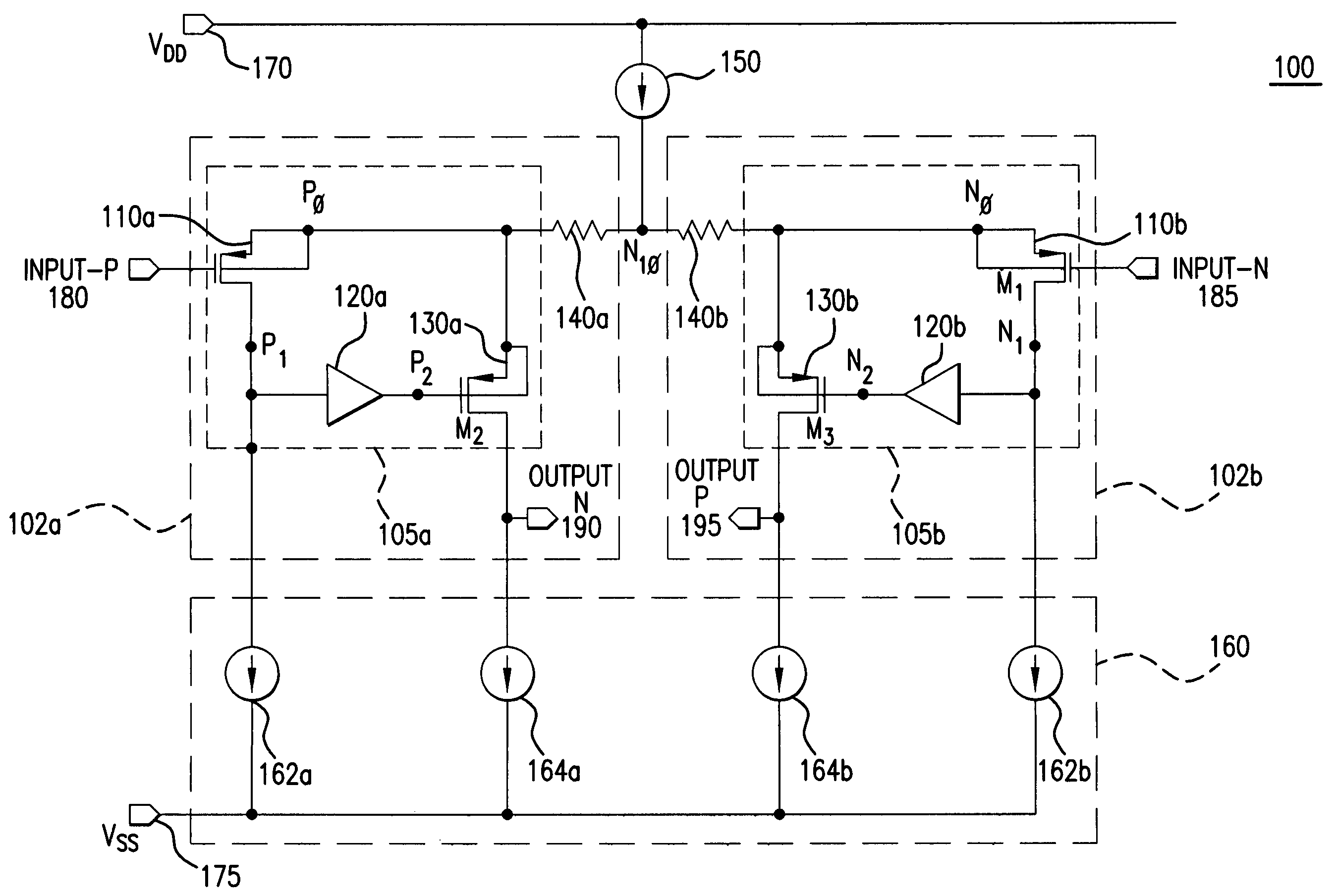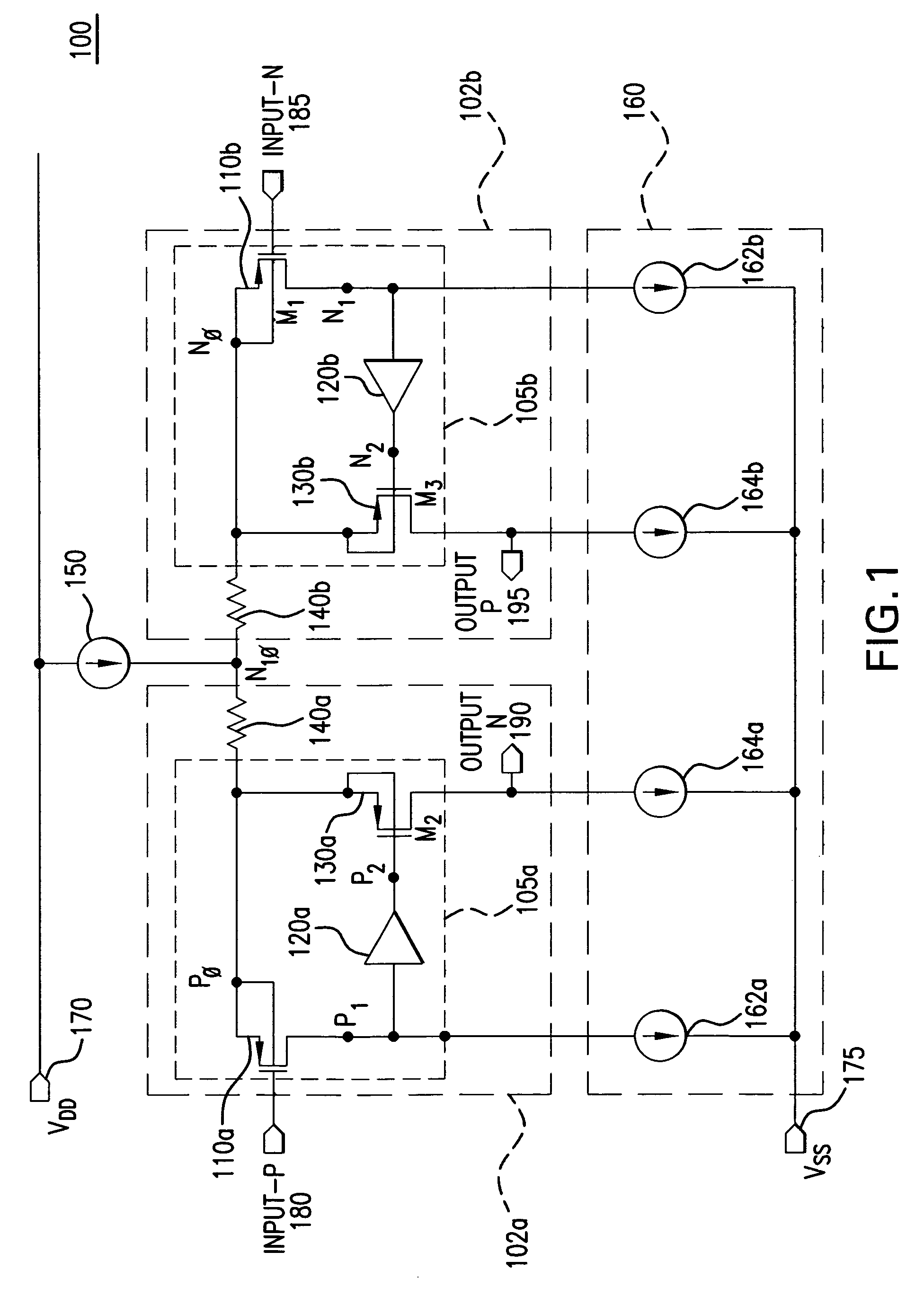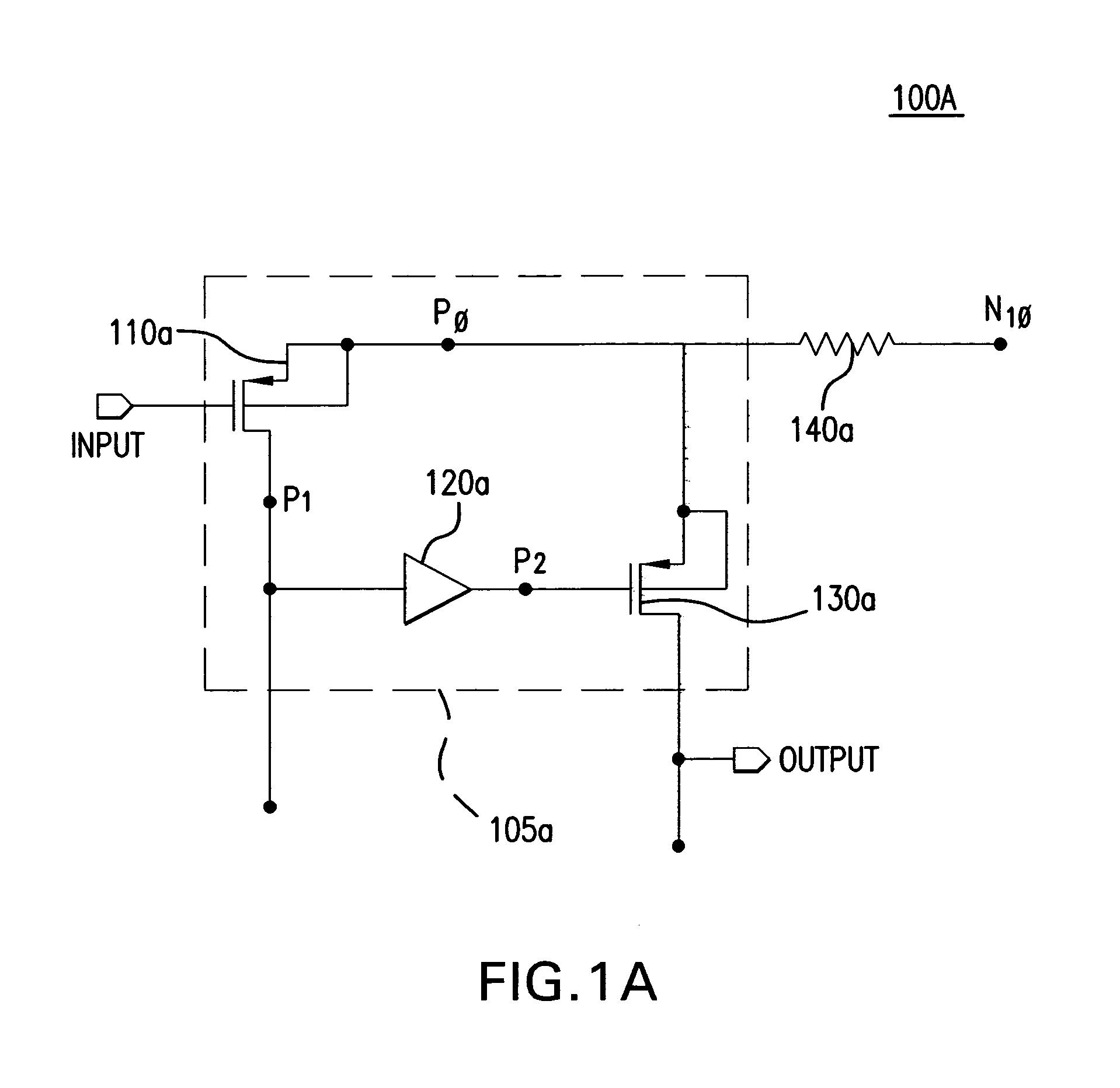Linear low noise transconductance cell
a transconductance cell, low noise technology, applied in the field of amplifiers, can solve the problems of insufficient linearity of analog signal processing circuits, insufficient linearity of transconductance cells, and high cost of linearity and transconductance improvement, and achieve low noise, improve linearity, and improve linearity.
- Summary
- Abstract
- Description
- Claims
- Application Information
AI Technical Summary
Benefits of technology
Problems solved by technology
Method used
Image
Examples
Embodiment Construction
[0026]FIG. 1 is a block diagram of a low noise transconductance cell 100, according to an embodiment of the present invention. Transconductance cell 100 is connected between supply potential VDD 170 and supply potential VSS 175. In operation, transconductance cell 100 is operably coupled to receive a differential input voltage at input-p 180 and input-n 185. Transconductance cell 100 then converts the differential input voltage into a differential output current at output-n 190 and output-p 195.
[0027]Transconductance cell 100 includes a differential circuit pair having two equivalent half-circuits 102a and 102b, a bias current source 150, and a load current stage 160. The dimensions and values of the components in each half-circuit are matched to create the balanced differential circuit.
[0028]Each half-circuit 102a, 102b includes a feedback loop 105a, 105b. In an embodiment of the present invention, each half-circuit 102a, 102b also includes a resistor 140a, 140b coupled to the feed...
PUM
 Login to View More
Login to View More Abstract
Description
Claims
Application Information
 Login to View More
Login to View More - R&D
- Intellectual Property
- Life Sciences
- Materials
- Tech Scout
- Unparalleled Data Quality
- Higher Quality Content
- 60% Fewer Hallucinations
Browse by: Latest US Patents, China's latest patents, Technical Efficacy Thesaurus, Application Domain, Technology Topic, Popular Technical Reports.
© 2025 PatSnap. All rights reserved.Legal|Privacy policy|Modern Slavery Act Transparency Statement|Sitemap|About US| Contact US: help@patsnap.com



